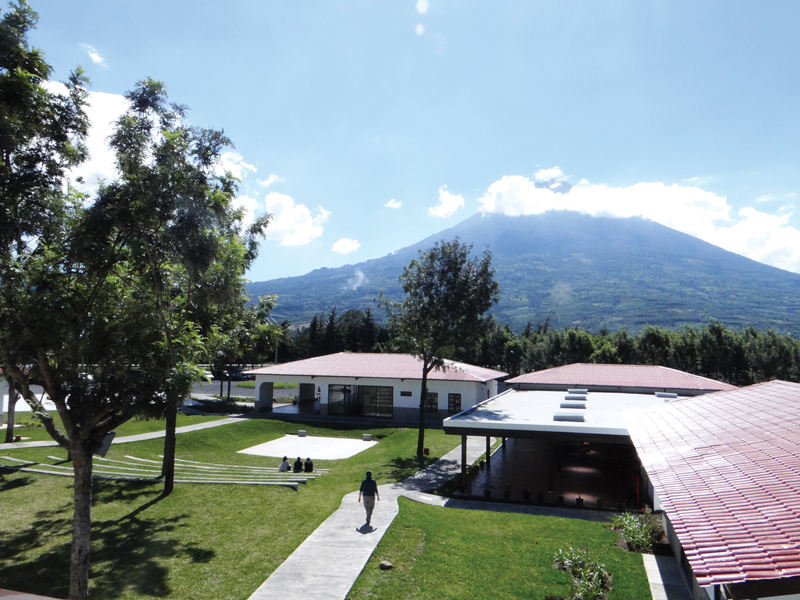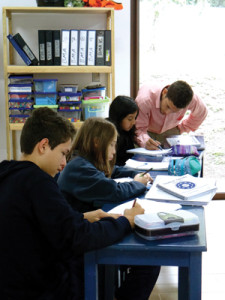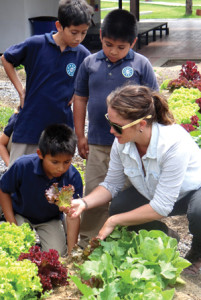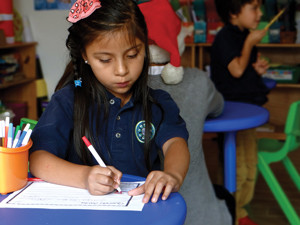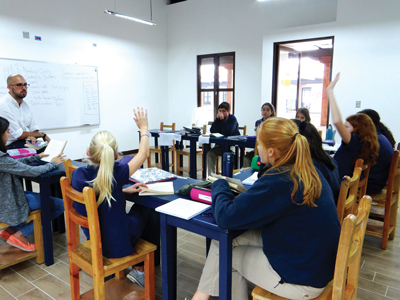The Antigua International School receives accreditation
The Antigua International School has received accreditation through the New England Association of Schools and Colleges’ (NEASC) Commission on International Education (CIE). Founded in 1885, NEASC is the oldest regional accrediting association in the United States.
It serves almost 2,000 public and independent schools, universities and colleges (think Harvard, Yale, M.I.T., etc.) as well as all public schools in the New England states. It also accredits approximately 100 American and international schools in other countries.
Why is accreditation through an agency such as NEASC important?
1) For prospective students and their parents, accreditation serves a consumer protection purpose. It provides assurance that the school has been evaluated and has met accepted standards established by and with the profession.
2) For the school, accreditation enhances its national and international reputation and represents peer recognition.
In order to acquire accreditation through NEASC-CIT, an international school must:
1) Use English as a primary language of instruction and communication throughout the school.
2) Demonstrate the international nature of the school through a mission that includes creating international citizens: through demographics of the student body and staff, and through the co-curricular experiences and programs offered.
3) Provide a curriculum that in content, design, implementation and assessment reflects best practices in American and international education.
4) Prepare students to be able to transfer to similar schools worldwide or, upon graduation, to enter colleges and universities where English is the primary medium of instruction.
The accreditation process involves five basic steps, during which each school is required to have a clear statement of philosophy and objectives and is evaluated in terms of how well it meets its own stated purposes. In addition, each school is required to meet a set of agreed upon written standards for accreditation, developed and endorsed by educational peers, in each area of its operation.
The steps toward accreditation by NEASC-CIT are:
1) The Candidacy Visit
The school receives a two- to three-day visit from at least two members of NEASC-CIT, experienced educators themselves, to ascertain the school’s readiness to undertake a self-study. For AIS, the candidacy visit occurred during the spring of 2012. Candidacy status, meaning that the team felt AIS was ready to begin the accreditation process, was awarded to AIS as a result of that visit.
2) The Self-Study
The self-study is the most important part of the accreditation process in commitment of time and effort. During this period, the school studies itself, in order to make an honest assessment of whether it is meeting both is own objectives and the written standards for accreditation determined and endorsed by educational peers. Areas that must be studied during this phase are: 1) school guiding statements, 2) teaching and learning, including access to teaching and learning 3) governance and leadership, 4) faculty and support staff, 5) school culture and partnerships for learning, 6) operational systems. AIS worked on achieving its own objectives and the standards of accreditation from spring 2012 through the 2014 school year.
3) The Team Visit
A team, composed of qualified administrators and teachers from other NEASC-accredited schools, visits the school for at least four days, following the completion of the self-study. The primary function of the team is to provide an objective assessment of the conclusions of the self-study, in the light of the school’s own philosophy and objectives, and the standards for accreditation. The team writes a detailed report, for the school and for NEASC-CIE, which addresses these issues. For each area studied, the team offers a description of its observations and perceptions, and a set of commendations and recommendations with regard to accreditation. The team visit to AIS occurred in May 2014.
4) Decision on Accreditation
The NEASC-CIE reviews carefully the visiting team report and considers the recommendations of the visiting team relative to accreditation. The commission then makes a recommendation, upon which the governing body of NEASC acts. The decision may be to: a) award accreditation, b) defer accreditation, c) not award accreditation.
NEASC-CIE initially deferred accreditation to AIS, until the school could continue development of several areas regarding standards of accreditation. This meant more self-study on the part of the school, and a return team visit in January 2016. During that visit, the team determined that AIS had reached standards for accreditation in all areas, and recommended accreditation, which has since been awarded.
5) Subsequent Procedures
Review of an accredited school continues, after the award of accreditation, to ensure that the school continues to meet standards of accreditation.
AIS will make a two-year report to NEASC-CIE, addressing areas of commendation and recommendation made by the accrediting team in its report to NEASC-CIE.
Another onsite evaluation, by professional educators sanctioned by NEASC-CIE, will occur five years following the initial evaluation.
Perhaps the value of the effort by AIS to meet standards for accreditation can best be seen in the recognition of these standards by colleges and universities worldwide in their acceptance of graduating AIS students. In June 2017, AIS will have its first graduating class of 14 students. Since most students applied to several colleges or universities, the group of 14 has, in total, been accepted to 38 institutions throughout the world. These include:
In the United States: Northeastern University, Purdue University, Syracuse University, Penn State, Michigan State, University of Colorado at Boulder, Boston University, Texas Christian University, American University, George Mason University, Rochester Institute of Technology, University of Miami, University of Tampa, University of Southern California, Virginia Tech and 15 other universities and colleges.
In Canada: University of British Columbia and Emily Carr University.In Europe: Erasmus University, in the Netherlands; University of Rotterdam; and University of Applied Sciences, in Bern, Germany. In Mexico: Anahuac Mayab. In Guatemala: Universidad Francisco Marroquin and De Valle de Guatemala.
An additional affirmation of the value seen by accepting colleges and universities is the amount of merit scholarships that they provide for incoming students whom the college would like to see attend its school. AIS’ 14 graduating students have received a total of $189,000 in merit scholarships from colleges and universities in the United States. These awards were based solely on recognition of outstanding academic achievement in a NEASC-CIE accredited school.
website: ANTIGUA INTERNATIONAL SCHOOL
REVUE article by Dianne Carofino
